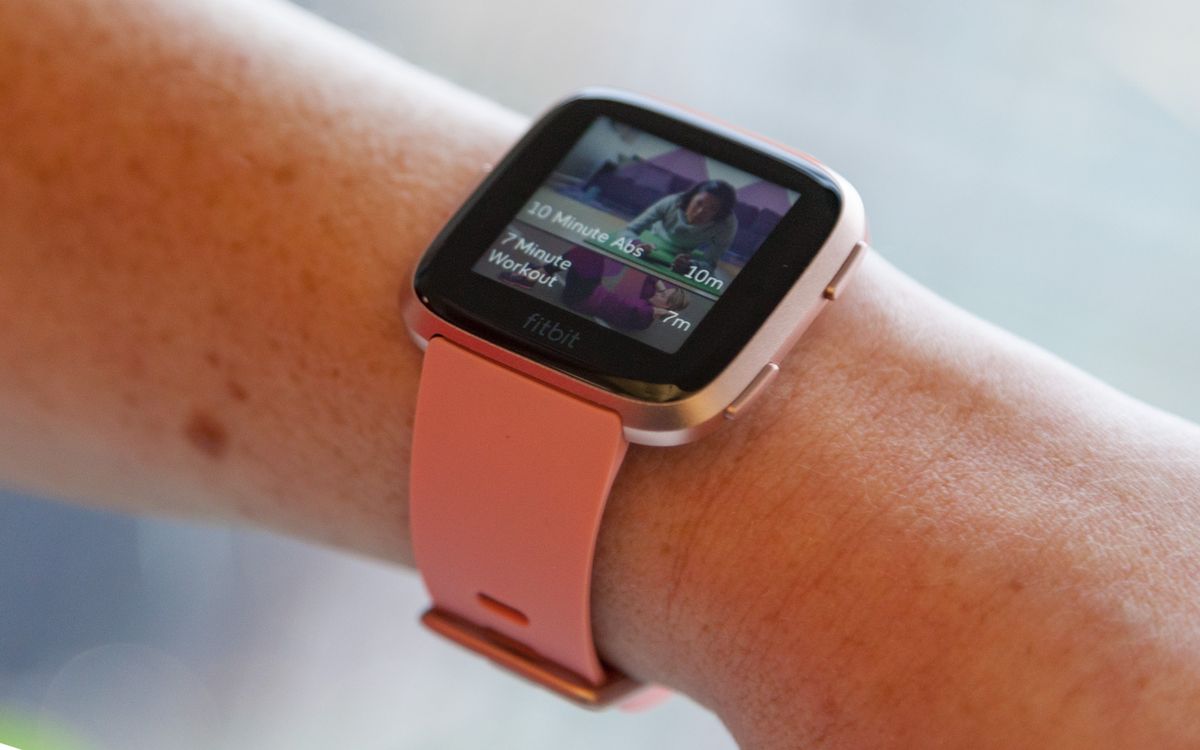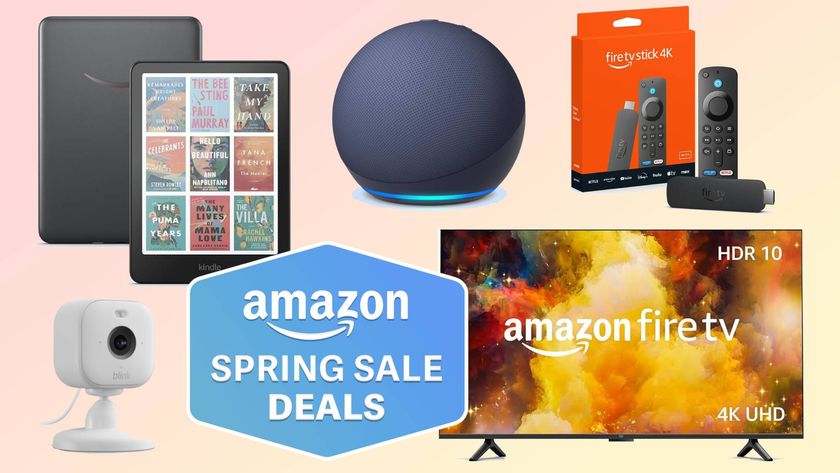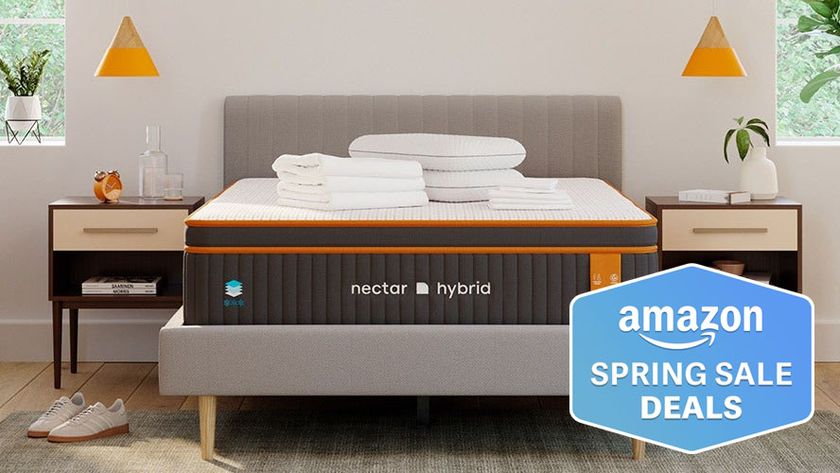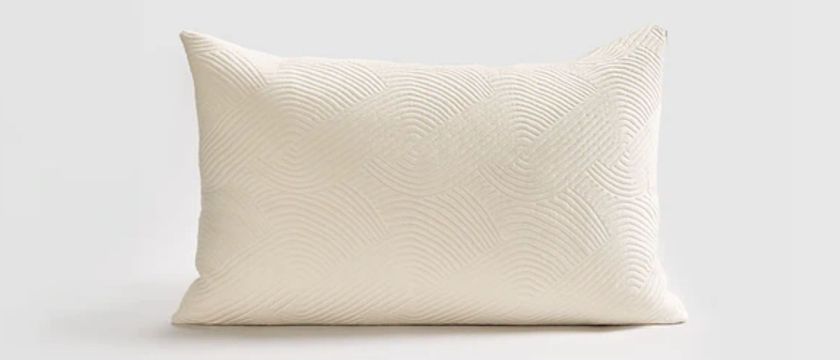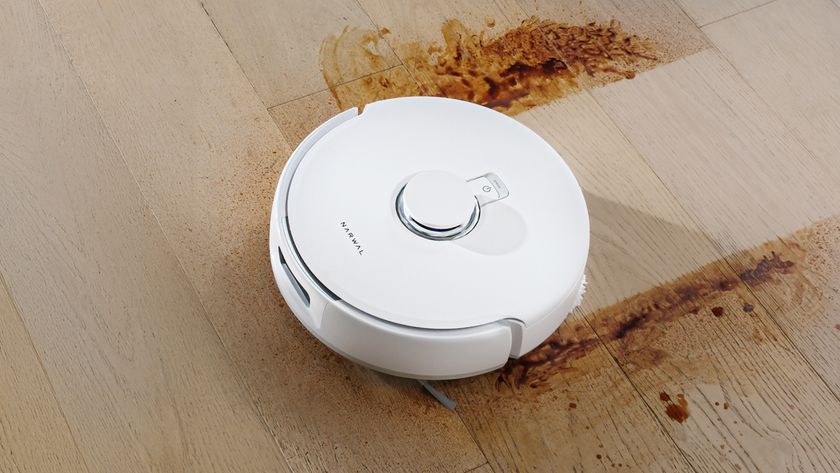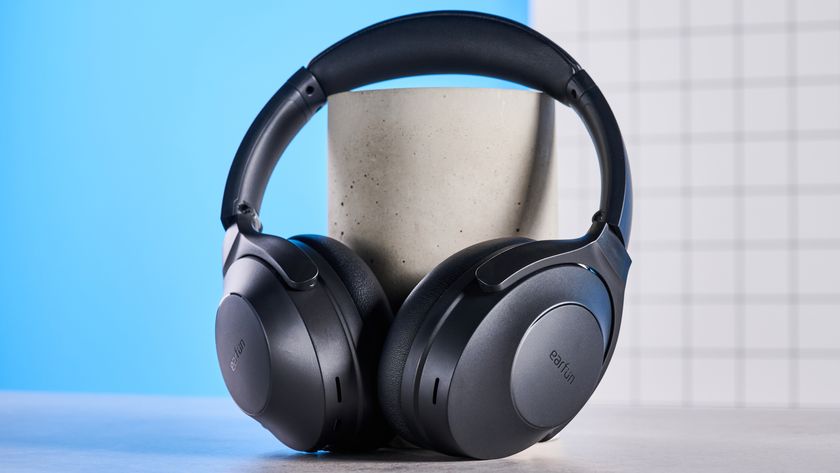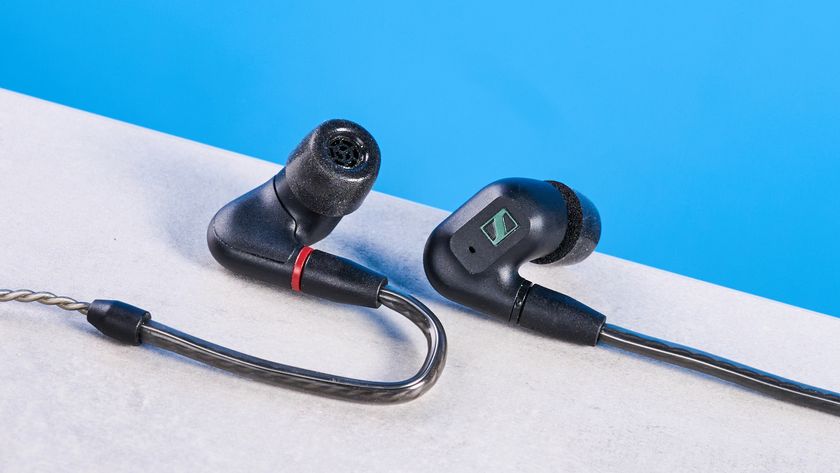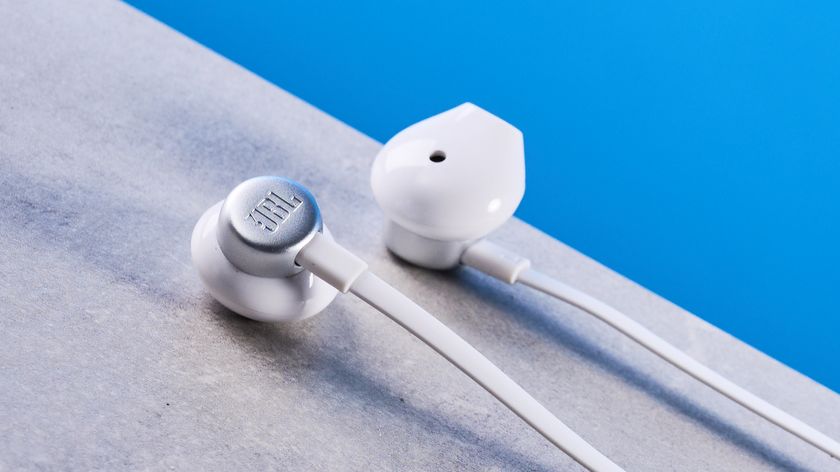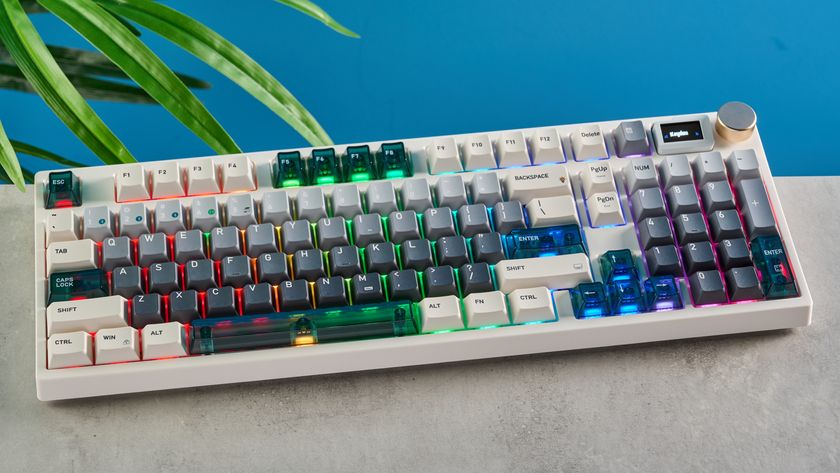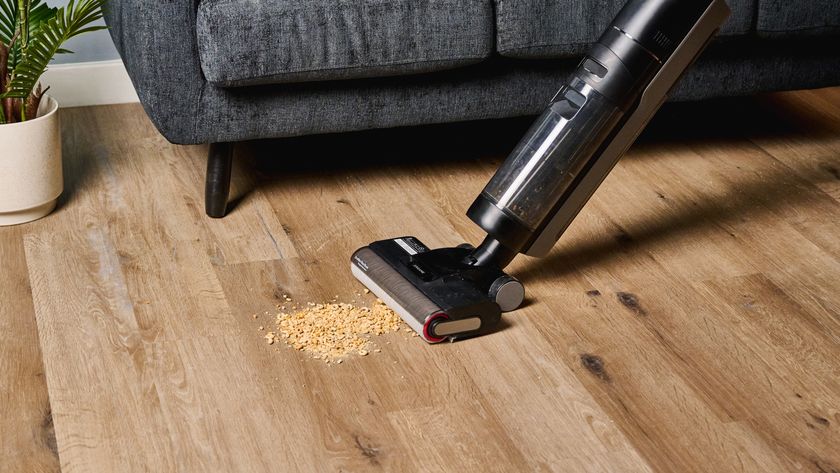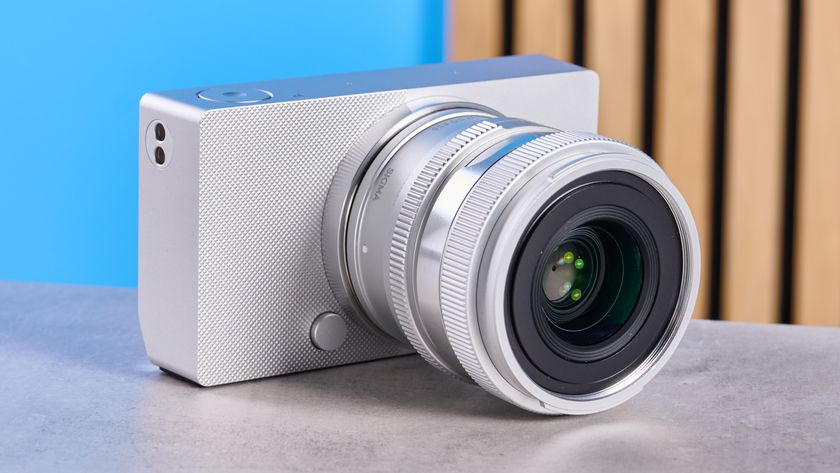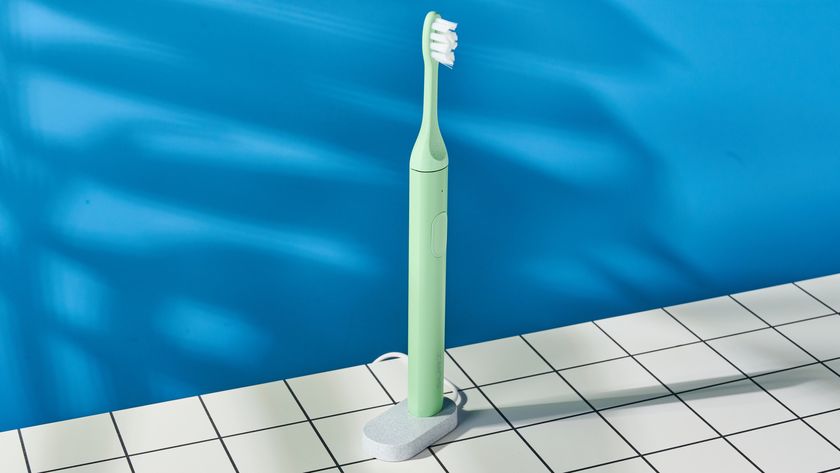Tom's Guide Verdict
With improved design and thoughtful new features, Fitbit's Versa edges closer to taking Apple's smartwatch crown.
Pros
- +
Sleek, lightweight design
- +
Four-day battery life
- +
Female health-tracking features
- +
Insightful sleep analysis
Cons
- -
Small app store
- -
No on-board GPS
- -
Limited actionable notifications
Why you can trust Tom's Guide
Convincing people they need a smartwatch isn't easy. Apple finally found its stride by emphasizing the Apple Watch's health and fitness capabilities and giving buyers tons of finishes and bands to choose from. Fitbit is taking the same approach, but its first attempt, the Ionic, left a lot to be desired in the looks department.
So the company went back to the drawing board and designed a smartwatch most people would actually want to wear. The $200 Fitbit Versa, available to buy now, is both thinner and cheaper than the Apple Watch. It offers many of the same features Apple's more expensive device does, such as onboard music storage and an app store.
Editor's note (November 2019): The Fitbit Versa's successor, Fitbit Versa 2, is out now and offers all of the Versa's features plus a few extra — including Alexa integration — for the same price. The Versa 2 also sports a new Apple Watch-esque display that gives it a more premium feel than the original Versa. Check out our full Versa 2 review to see if it's worth the upgrade.
- Best Fitbit: Choose the best Fitbit for you
Design: Finally, a smartwatch I'm not embarassed to wear
When I first caught a glimpse of the Versa, I thought it was an Apple Watch. And though Fitbit's smartwatch does take a few design cues from Apple's device, now that I've been wearing the device for almost a week, I've noticed some clear differences.
Though the 39-millimeter Versa is slightly wider than the 38mm Apple Watch, the new Fitbit feels much lighter, at 0.8 ounces compared to the 1-ounce Series 3 with cellular. Sometimes I forget I'm wearing it. With a case depth of 11.2 mm, it's also thinner than the 11.4-mm Series 3, which has a more bulbous shape that makes it feel thicker than it actually is. The new $399 Apple Watch Series 4 is taller than the Versa, but not as wide or deep.
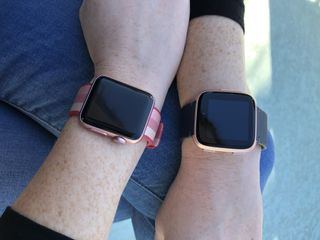
Compared to the Ionic, the Versa is positively svelte. The Ionic sports a 38.6-mm display, but it's surrounded by a thick aluminum frame that houses a GPS antenna but adds a lot of bulk, especially for those with thinner wrists. The Versa does not have built-in GPS; instead, it connects to your phone's GPS. More on that later.
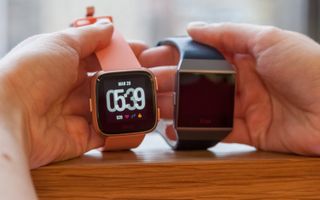
The Versa still looks very much like a smartwatch but one I'm not embarrassed to wear outside of the gym. It's more comfortable to wear than my Apple Watch, and I can change it up with affordable leather bands to make it more stylish. I wore it out to dinner and drinks with my girlfriends on the Las Vegas Strip and didn't think twice about it. There's no way I would've worn the Ionic out on the town, and most of the time, I feel like my Apple Watch detracts from a nice dress, too.
Compared to the Ionic, the Versa is positively svelte. I wore it out to drinks with my girlfriends and didn't think twice about it.
I found changing the Versa's bands to be a little tricky at first, because they're held in with pins you have to slide to release. I imagine this will get easier, but when I first swapped out the default sporty classic band for a midnight-blue leather one, I struggled for a solid five minutes.
Setup: Workouts, music and more
To slim down the Versa and remove the ugly aluminum frame that prevented the Ionic from fitting properly on people with small or even normal-size wrists, Fitbit sacrificed built-in GPS. Instead, the watch connects to your smartphone's GPS. That means you'll have to take your phone running or biking to get accurate data on mileage, splits and pace. Fitbit says that if you run or bike the same route regularly, the device's algorithms will be able to accurately log your workouts even without your phone nearby.
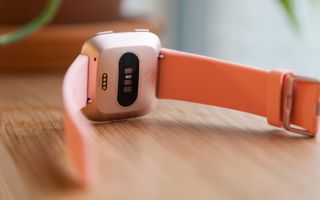
In general, that's true, but the lack of onboard GPS is still a letdown. Like the Ionic, the Versa can store up to 300 songs, which makes it seem like the kind of device I can use without a phone. Without GPS, it doesn't feel like that.
Storing songs on the watch itself is easy, if you have a Deezer or Pandora premium account. Both services are $9.99 a month. I signed up for the free three-month trial that Deezer is offering Versa users and stored multiple lengthy running-focused playlists on the Versa.
I set out for a 3-mile run with my phone in tow for GPS, which wasn't ideal, but I did find switching between the music and workout screens seamless.
You don't need to have the Deezer app installed on your phone; just sign in to your account in the Fitbit app under your device's Media settings, and tap to add music. It took about 30 minutes to sync 80+ tracks over Wi-Fi, so you'll want to start this process well before you plan to hit the pavement.
MORE: Best Fitness Trackers
If you don't subscribe to Deezer or Pandora, you can load MP3s on the device using the Fitbit desktop client. It's not quite as easy as using a streaming service with the watch, but it gets the job done.
I paired my AirPods to the Versa without any issue, which was a relief after the problems I had pairing them with Garmin's Forerunner 645 Music. I set out for a 3-mile run with my phone in tow for GPS — which wasn't my ideal scenario, but I did find switching between the music playback and workout screens to be seamless. All I had to do was long-press the button on the left side of the Versa to toggle between the two. You can skip songs by tapping the screen and control the volume with the two buttons on the right side of the device.
Fitbit should seek out more streaming music services to partner with. Pandora is a solid option; but Deezer isn't as well-known in the U.S., and I doubt anyone will switch to an unfamiliar service just because of its Fitbit integration. Spotify, where are you?
Female-health tracking, including periods
One brand-new — and potentially game-changing — addition to Fitbit's platform is a suite of female-health-tracking features, which will give women the ability to log their period symptoms and gain insight into fertility or potential health conditions directly on the watch face.
Those features rolled out May 7, and they're available in the Fitbit app for all users who identify as women, not just those who buy a Versa.
I had high hopes for these period-tracking features, which are already available in some popular smartphone apps, because of the potential to gain more insight into your body and your mood. A woman's cycle is a key part of her overall health, affecting sleep quality, exercise, food intake and other metrics that Fitbit already tracks.
But right now, Fitbit's female health-tracking is pretty basic. First, you set up the feature in the Fitbit app, selecting the days of your last period on a calendar overview, then inputting the usual length of your period and the length of your cycle. You can also pick a birth control method. Then you can choose to view predictions for your next period and toggle on a setting to receive notifications two days before your period is expected to begin.
In the calendar overview, you can log details such as flow intensity and conditions like cramps, but you can't create your own notes that might add more context.
On the Versa's face, you'll see those notifications. You'll also see where you are in your cycle in the watch's Today view, which is accessible by swiping up.
But overall, these features are underwhelming. I'm expecting Fitbit to add more analysis and connect the dots between your cycle, your activity and your sleep. This is a solid first step, but I want more.
Software: Mostly unchanged...for now
Fitbit didn't change much in its Fitbit OS software platform, which launched on the Ionic. But if you're upgrading from an Alta or Charge fitness band, the Versa offers a brand-new experience.

There are a variety of apps and clock faces to choose from, some designed by Fitbit and some from high-profile third parties. You can store a United Airlines boarding pass on the Versa, browse New York Times headlines, control your Philips Hue lighting and scan your Starbucks card to pay for coffee. All of those apps are also available on the Ionic.
With 550 apps and clock faces, Fitbit doesn't have the most robust app store — the Apple Watch has thousands of apps to choose from. But Fitbit is encouraging developers to build useful apps for its devices, and I expect to see more in the future.
MORE: Best Diet and Nutrition Apps for iOS and Android
A new Today view, accessible by swiping up from the watch face, displays an overview of your stats for the day, including steps walked, heart rate and workout metrics. Right now, the Today view offers generic tips on nutrition, heart health and sleep, but later this year, Fitbit will start using your data to offer personalized insights in that section.
Fitbit's sleep analysis is the most accurate of any fitness tracker or smartwatch I've tried, and the insight into how much time I spend in each sleep stage (awake or in light or deep sleep) is extremely useful, especially on days when I can't figure out why I'm so tired. This analysis is a feature on every Fitbit with an optical heart rate sensor.
Android users have an additional feature, Quick Replies, which makes notifications from Android phones more actionable. When you receive a message on your phone, you can tap to send a prewritten reply. Fitbit offers a few of its own, such as "Yes," "No" and "Sounds good." But you can add your own custom phrases, too. When I tested the feature, I found it to be quick and easy, but if you're not in Bluetooth range of your phone or if your Wi-Fi network is spotty, you might not receive the message on your wrist at all. Still, this makes the Versa a more full-fledged smartwatch. Sadly, it's a feature iPhone owners probably won't get anytime soon, if ever.
Battery Life: All you can hope for
I squeeze four days of use on a charge from the Versa, even with workouts and music playback, which is in line with newer Fitbit devices like the Ionic. That means I've been able to track a few nights of sleep, listen to music, see smartphone notifications and work out without needing to recharge the watch.

I don't like the Versa's oversize charging cradle, which continues Fitbit's trend of designing bizarrely shaped proprietary chargers. The charger is larger than the watch itself, which seems unnecessary.
Fitbit Versa vs. Apple Watch
The Apple Watch is still the best smartwatch for iPhone users, because it can handle more tasks than the Versa can and has more advanced health and fitness features. For instance, iPhone users can view messages relayed to the Versa from their phones, but they can't send responses. Android users can reply to SMS and messages from apps such as Facebook Messenger and WhatsApp with a feature called Quick Replies, which rolled out in May. The Versa also lacks built-in GPS, which the Apple Watch offers so you can run or bike without a phone nearby. It will come as no surprise that the Apple Watch is the only smartwatch that supports Apple Music integration.
The $279 Series 3 costs $80 more than the Versa, and that’s for the lowest-priced, last-gen 38mm model without cellular connectivity. But the Series 3 is the best pick for iPhone users who want seamless integration between their smartwatch and their iPhone, the ability to store Apple Music playlists and podcasts offline for listening without a phone nearby, and sophisticated health features like alerts when your heart rate dips too low or is irregular.
The newer 40mm $399 Series 4, which sports an electrical heart rate sensor for diagnosing atrial fibrillation, is $200 more than the Versa, which might not be worth it for many buyers. Add LTE and that's a $300 premium. If price and activity-tracking are your biggest priorities, Fitbit's latest smartwatch is a must-buy. For advanced heart rate features, including an ECG app and background heart rate-monitoring for low and high heart rates, the Series 4 is worth the splurge.
Bottom Line
The Versa is clearly the first attempt at the device Fitbit wants to make: a mainstream smartwatch at an affordable price point with a sense of style backed up by Fitbit's advanced health-tracking platform and well-designed app. There are a few things missing. On-board GPS would make this watch a must-buy for people who are more active than average. The new female health-tracking features, which are a welcome addition, could use more customization and use the rest of the data Fitbit collects to give you more insights.
But for $200, you'd be hard-pressed to find another smartwatch you'd actually want to wear. Fitbit appeals to everyone with this. But I bet the next one will be even better.
Credit: Shaun Lucas/Tom's Guide
Caitlin is a Senior editor for Gizmodo. She has also worked on Tom's Guide, Macworld, PCWorld and the Las Vegas Review-Journal. When she's not testing out the latest devices, you can find her running around the streets of Los Angeles, putting in morning miles or searching for the best tacos.
